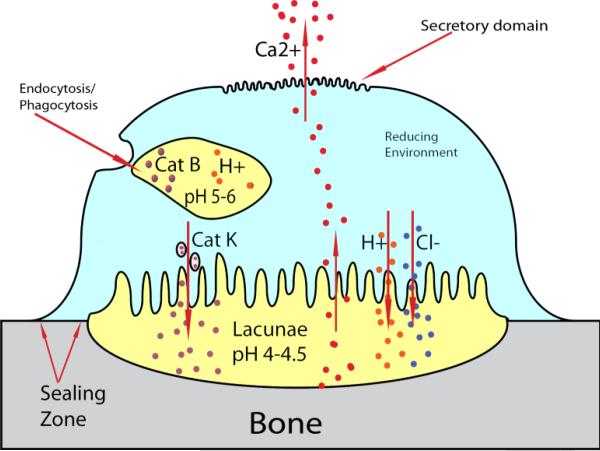Figure 1.
General osteoclast structure and function demonstrating unique environments, which can be utilized for site-specific release of drugs. Osteoclasts sequester portions of bone by sealing off areas called lacunae. The adjacent membrane to the bone ruffles and releases cathepsin K, and HCl, reducing the pH to 4-4.5 and dissolving the bone. Calcium from the bone is then transported to the secretory domain and released into the interstitial space. Although not specific to osteoclasts endosomes/lysosomes reduce pH to 5-6 and contain cathepsin B, two environmental specific attributes which can be used for the design of polymer-drug linkers.

